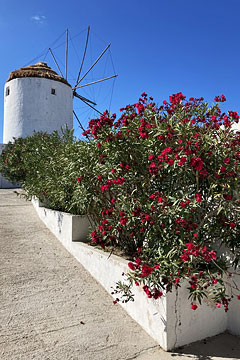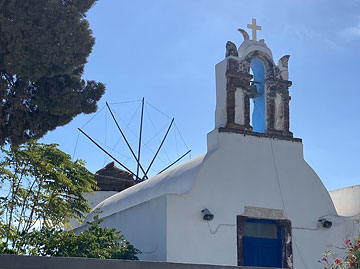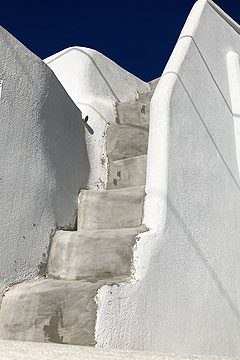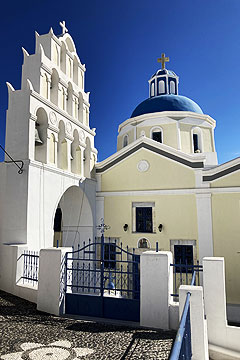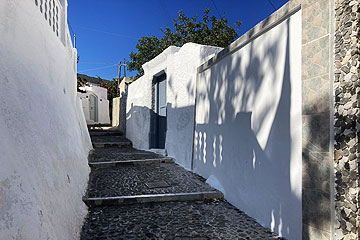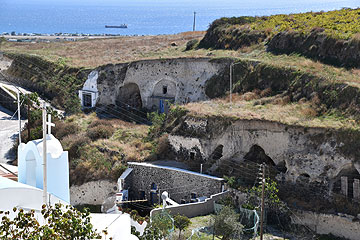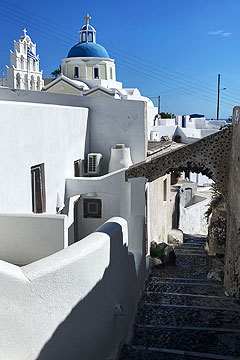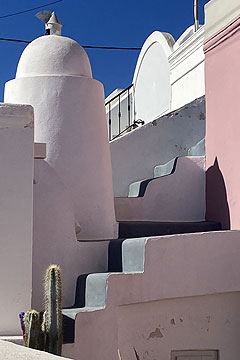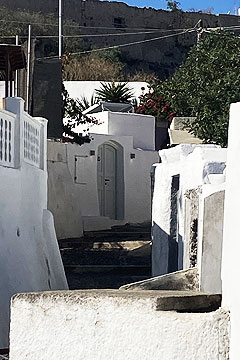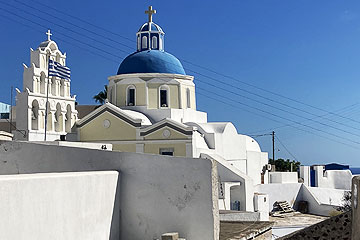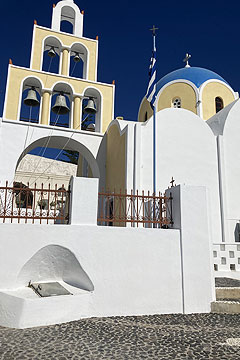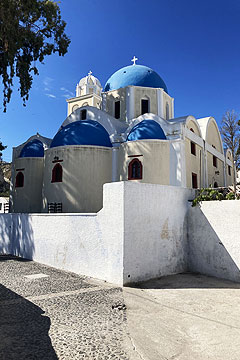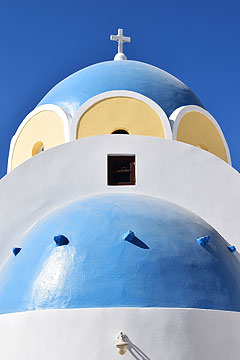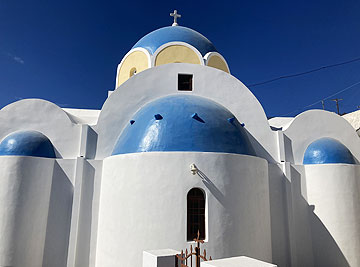

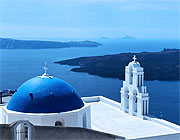
Fira's wonderful Museum of Prehistoric Thera is full of amazing artefacts and the town has great views over the caldera; plus two beautiful peaceful villages.
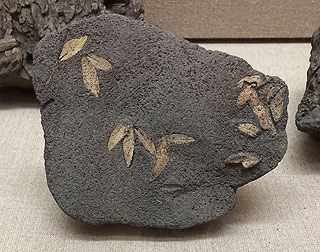
Our main reason for going to Fira was the Museum of Prehistoric Thera, so we made a beeline for it after parking not too far from the centre. Of particular interest were the finds from prehistoric Akrotiri. But the museum is also very informative on the formation of the island and its geology and climate tens of thousands of years before that.
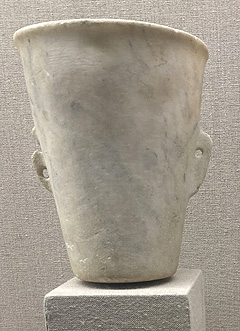
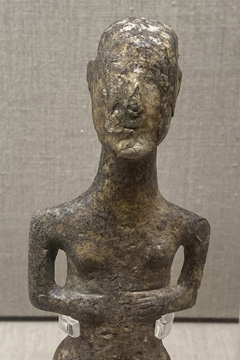

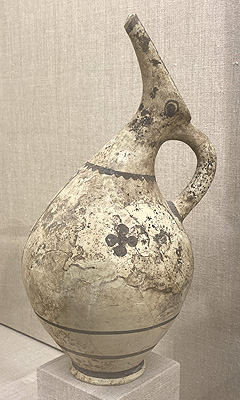
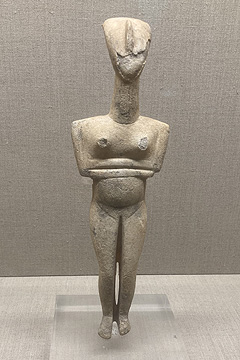
Today Santorini is composed of five islands, of which Thera is the largest. Originally Santorini was a circular island, the top of a volcanic cone. A series of volcanic eruptions altered the landscape, creating and enlarging the caldera and breaching the rim, until a cataclysmic event in the Late Bronze Age, also called the Minoan Eruption, in the mid 17th century BC, left Santorini looking much as it does today, with a later formation of the islets Palea Kameni and Nea Kameni within the caldera. The eruption destroyed Akrotiri, covering it in volcanic material that preserving the ruined walls and artefacts inside.
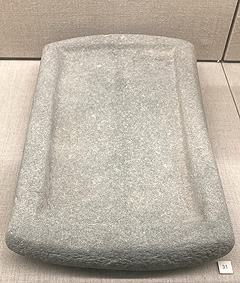
The skill evident in the creation of some of the figurines, jars and jugs from over 5,000 years ago is quite amazing.
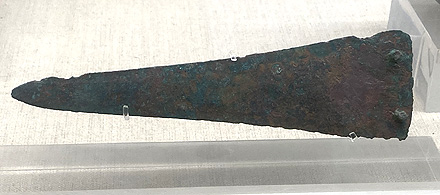
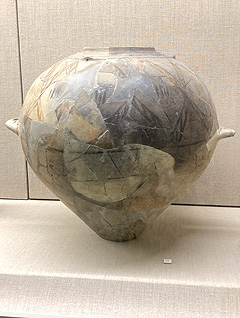



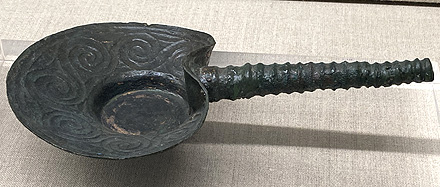
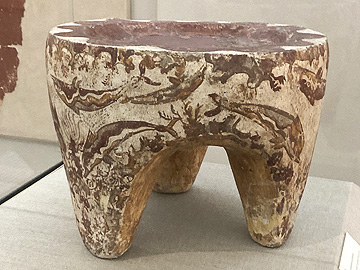


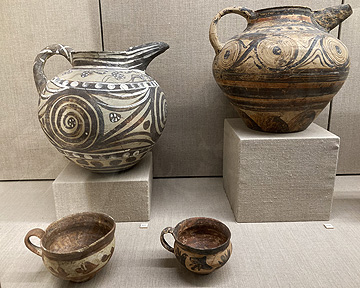
Thera was in contact with the Aegean world since Neolithic times. Interaction strengthened during the Early Cycladic period (3rd millennium BC) and Middle Cycladic period (c. 2000 - 1650 BC). By the beginning of the Late Cycladic (mid 17th c. BC) there were also interactions with the Greek mainland, Crete and islands in the south east Aegean as well as with lands of the Eastern Mediterranean such as Syria and Egypt.
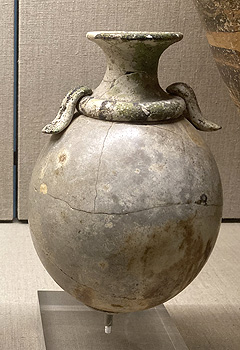
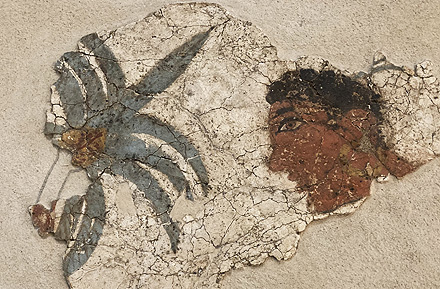
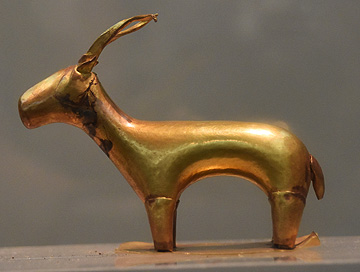
Probably the most famous object in the museum is a beautiful gold ibex figurine, discovered in mint condition inside a wooden box (of which nothing remains, itself inside a clay chest (larnax) at Akrotiri. Next to it was a pile of pairs of horns, mainly goats.
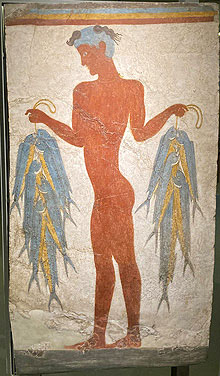
On the upper floor frescoes from Akrotiri are displayed. The town was covered in volcanic material as a result of the huge eruption around 3,650 BC. Private houses had at least one room adorned with frescoes, usually on an upper storey.
The frescoes provide a valuable insight into the lives of the people of Akrotiri and the vivid maritime frescoes are a testament to their seafaring nature.
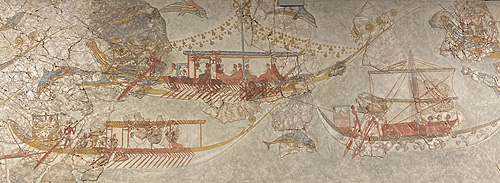
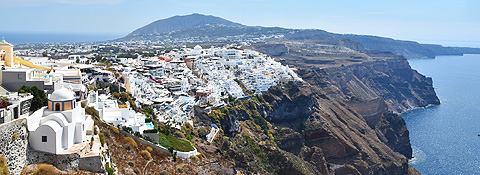
We spent hours in the museum but then wandered into the town to take a cliff-top walk and get lunch. We had a beer on the way at Volcan on the Rocks before heading along the cliff to the celebrated view over the blue-domed church.

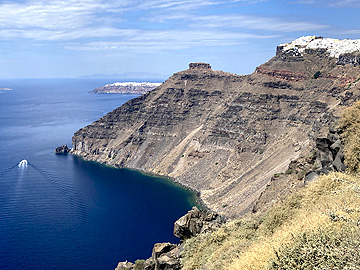
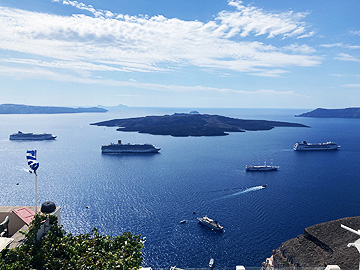
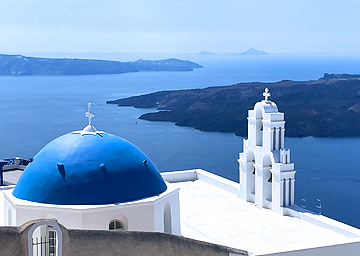
We had lunch at an Italian restaurant, Character, overlooking the caldera; very good pizza.
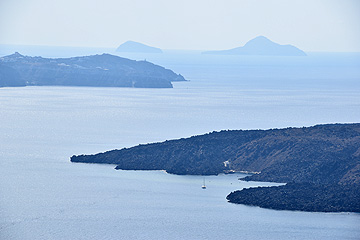
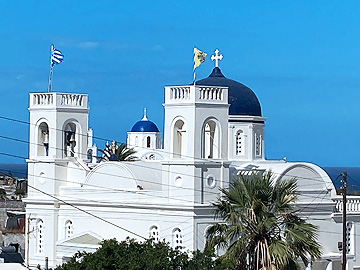
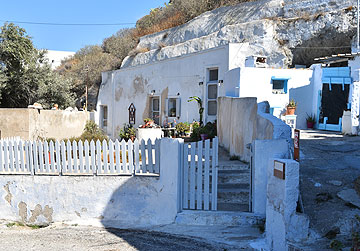
Fira was full of tourists from the cruise ships so we didn't linger but drove a short distance to the small village of Karterados, which was deserted and full of lovely scenes: blue domed churches, cave houses, narrow alleys and painted doors. Nothing spectacular, just a nice place to stroll around.

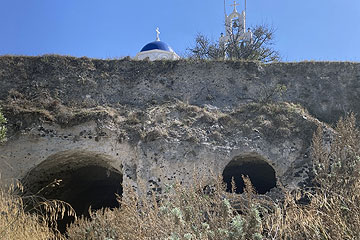
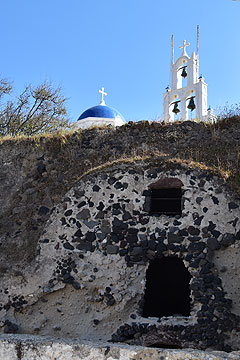
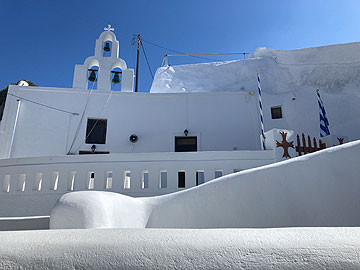
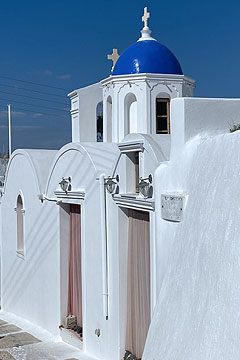
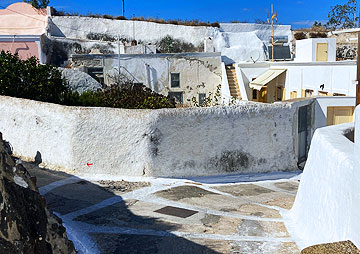

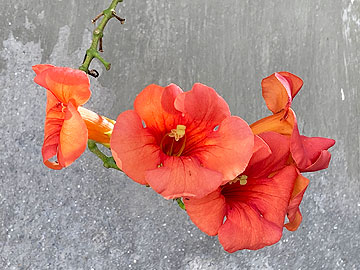
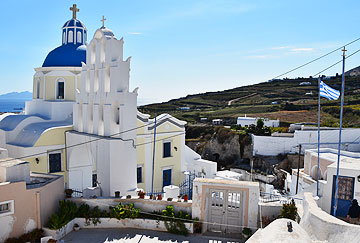
Vothonas is a lovely peaceful old village south of Karterados, narrow stepped alleys between whitewashed buildings and blue-domed churches lining a ravine of cave houses which now are mostly uninhabited.
